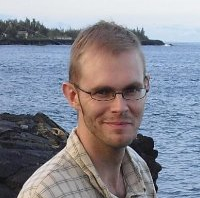 Frantz Martinache is assistant professor at Côte d’Azur Observatory (OCA) and has been working on astronomical instrumentation for several years. He offers today a MOOC entitled «Eagle Eye Astronomy», that is all about interferometry and high angular resolution astronomy. This Massive Open Online Course will be available on the France Université Numérique (FUN) platform, an initiative of the Ministry of Higher Education and Research. For this first session, no achievement certificate will be issued. This course is free for all students wishing to participate.
Frantz Martinache is assistant professor at Côte d’Azur Observatory (OCA) and has been working on astronomical instrumentation for several years. He offers today a MOOC entitled «Eagle Eye Astronomy», that is all about interferometry and high angular resolution astronomy. This Massive Open Online Course will be available on the France Université Numérique (FUN) platform, an initiative of the Ministry of Higher Education and Research. For this first session, no achievement certificate will be issued. This course is free for all students wishing to participate.
> Can you explain in a few words what is a MOOC ?
A MOOC is an adaptation of classical educational material that is modernized, reformatted and made compatible with on-line consultation. This requires an extra effort in the organization of the content, particularly in terms of segmentation and sequencing. Traditional classroom training requires a student to sit in a room in front of a person who will embark on a long monologue that can sometimes go on for hours. Studies in neurology and psychology show that this approach to teaching is not ideal : it is very difficult for the brain to remain focused for more than ten minutes beyond which the brain often "disconnects".
Hence the idea to segment a course into a series of short sequences that rarely exceed ten minutes. This is sometimes a bit tricky for the presentation of somewhat high level scientific content, where concepts build up on each other. You have to be efficient to explain these concepts in a very short time without sacrificing rigor : this is still a course and not just “popular science”. To refresh the brain between the short video sequences, it is also necessary to engage the student with more interactive activities. The web format makes it possible to host live interactive simulations, that the student can play with to really appropriate the concepts covered during the videos.
> What’s the theme of the MOOC you prepare ?
It is about an astronomical observation technique called optical interferometry that simultaneously combines the light from several telescopes or apertures to produce high angular resolution information content. The first two-telescope interferometry experiment took place right here in the seventies, on the Mont Gros, that still hosts OCA today. More recently, many researchers and engineers working at OCA have massively contributed to the design and the construction of interferometric instruments for the VLTI with AMBER and MATISSE. Interferometry is a bit of a tradition of OCA, and to propose this MOOC is a way for OCA to mark its territory.
> What is the interest to participate at this course ? What will it bring to the students ?
The hope, when setting up any course, is not just to transmit a few notions that will be forgotten if never put to use, but to whet the students’ appetite and make them want to know more, maybe start their own research project. The context of the MOOC allows us to innovate, forces us to be more rigorous on the content as well as on the format so the experience should also be comfortable.
Nowadays, one has the power to learn anything he wishes with the information available, scattered all over the Internet. However, to be able to select from and organize this giant stack of hay is quite hard in practice. Like a traditional course, a MOOC is a guided introduction to a topic : the information is structured and organized in a logical manner that makes it more efficient. The same way a museum curator organizes a collection for a given purpose, I select and shape ideas in order to present a coherent whole. My wish for this course is that it makes students want to acquire the know-how that will make able to further pursue the exploration of what remains an active research area.
> Who can apply ?
It isn’t a general public astronomy course and is clearly geared toward first or second year’s Master students. It covers simple but important concepts of observational astronomy that set real world limits on what is possible with a telescope. We see that interferometry is a cheat, a way to use an apparent limitation to our advantage ! Indeed, no single telescope is large enough to be able to see something else than a point when observing most stars. In order to discern distant and not very big objects, to describe them and produce images, we need to use several telescopes separated by large distances and recombine the light they receive under very specific conditions. This is what this course is all about : how to do this in the optical (as opposed to in the radio).
This Mooc has played in spring 2015.


